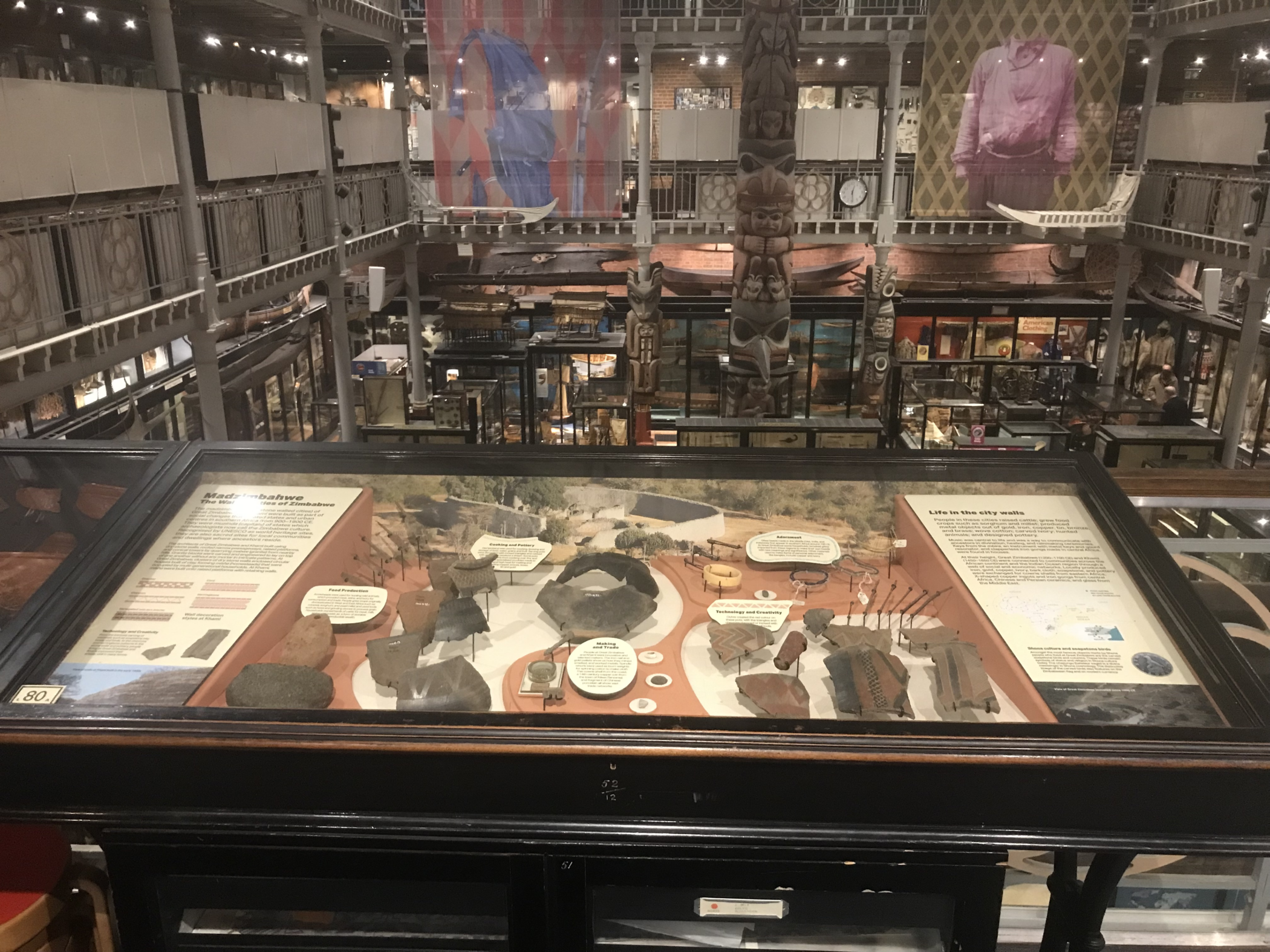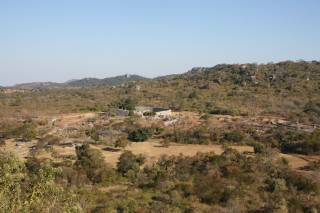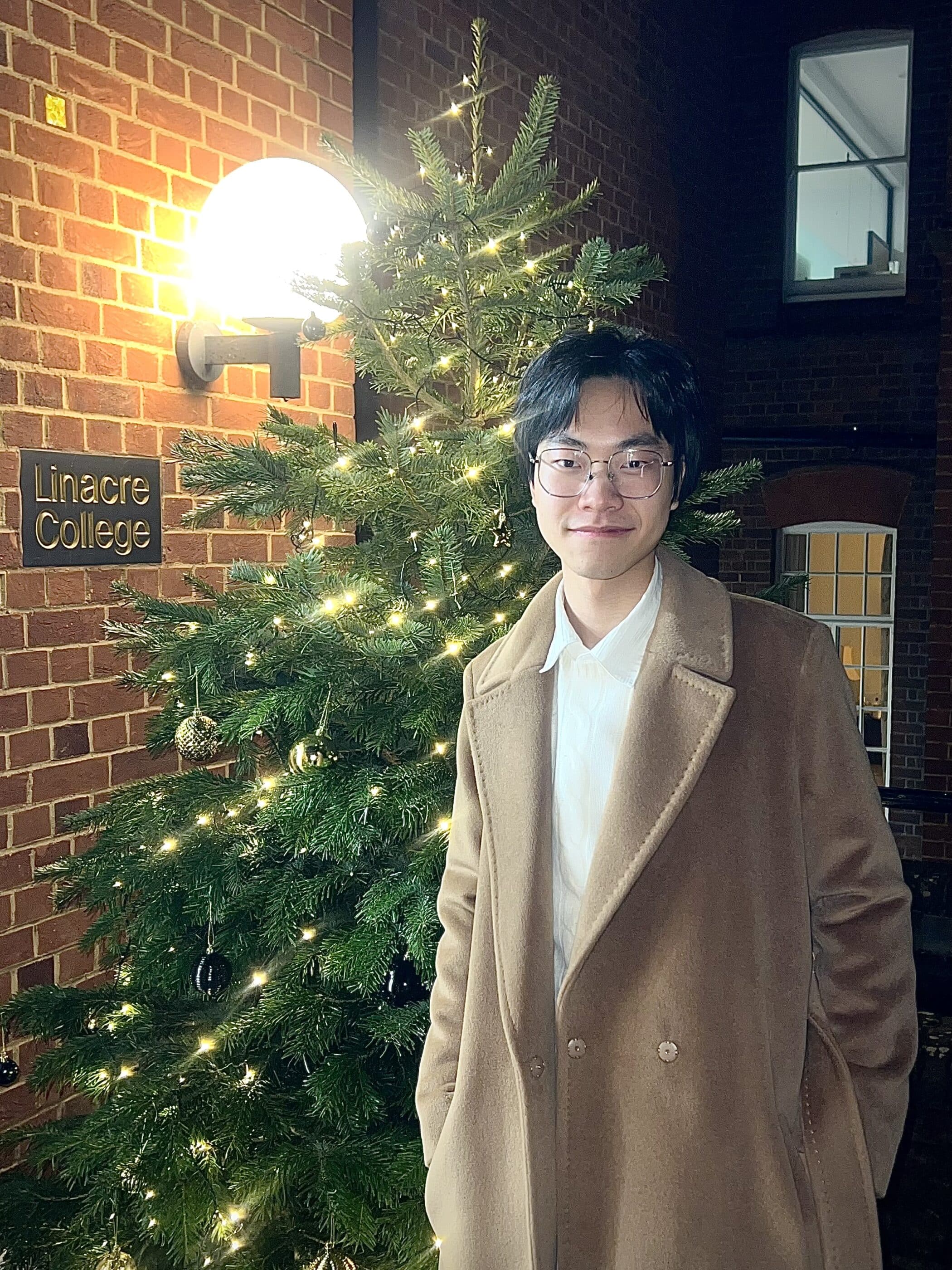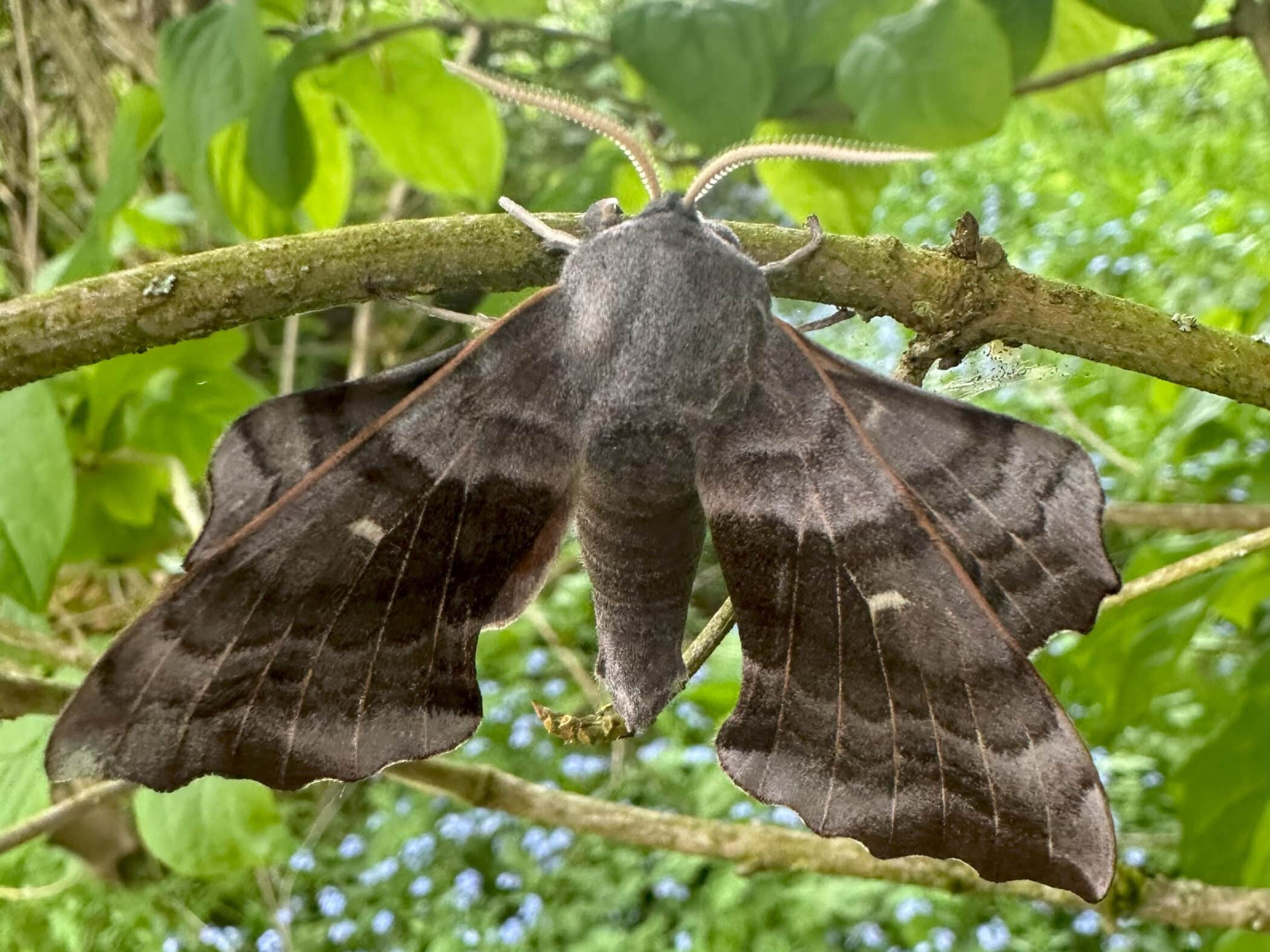Bell bottoms. Glass purses. Neon track suits. We all know that fashions come and go, and tastes change. During the 1960’s, the fashion of the Pitt Rivers Museum display cases was to use army green paint for the background colour and to lay out objects such as pot sherds in rows, with a focus on typology and evolution of form. The case in the PRM which displayed archaeological material culture from the Zimbabwean World Heritage sites of Khami and Great Zimbabwe was no different. In 2020, I applied to the Fell fund with my colleague in the Archaeology department at Oxford, Professor Shadreck Chirikure, to research the objects in the case and to design a re-display. Changing the paint colour was an easy upgrade, but telling the story of life in these amazing cities 1,000 years ago through a new case design was where the real work started.
The first time I visited the archaeological sites of Khami and Great Zimbabwe in 2015, I was lucky enough to be there with my colleagues in the Archaeology department at the University of Cape Town, South Africa, including Shadreck and his team of talented students. They enthusiastically took me around the sites, showing me their favourite parts of the site where they had excavated and talking about the amazing material culture they found, from glass beads, to gold, to serving bowls and brewing jugs. Even with the excitement of my first trip to visit these sites, I also experienced incredible moments of stillness in parts of the site where you are surrounded by mazes of architecture such as the conical tower and the curved walls of the Valley enclosures. The stones themselves are such powerful standing reminders of the incredible talent of the architects who built Great Zimbabwe; a place of reverence, a place where ancestors reside.
When Shadreck and I received John Fell Funding in 2020 to re-display the Great Zimbabwe and Khami case in the Pitt Rivers, we had the overwhelming sensation of only having a small case and a few hundred words on a label to be able to condense our passion for the archaeology and history of these sites for our visitors. With the Fell funding, we were also able to do some fun laser-based science on the glass beads and metal objects (see: https://www.prm.ox.ac.uk/laser-focused-researching-ancient-zimbabwe), and we were also then able to use that research to create a display that enables visitors re-imagine what it was like to live in these stone walled cites: what did people grow, eat, make, and trade? Importantly, there was also the story to tell about the colonial government denying the origin of Great Zimbabwe as an indigenous site (see: https://www.thebritishacademy.ac.uk/blog/reclaiming-great-zimbabwes-past-to-learn-lessons-for-the-future/), to the flowering of the site as a symbol of national pride after Zimbabwean independence.
In the process of designing the case, I was also lucky to have so many people around locally in Oxford and via Zoom calls in Zimbabwe who could tell me more personal stories of growing up with the knowledge and national heritage of these sites in their school curriculum, and the ongoing practice of playing music on instruments such as the mbira. At the PRM, we have volunteers and staff members with Zimbabwean heritage who captured how much this cultural heritage means to people living in diaspora through the audio tour for the case. Even though the process of re-display seemed to have many interruptions and extensions due to the pandemic, the finished case is a testament to the creativity and talent of the team at the PRM and all of our colleagues in Oxford, Zimbabwe, and South Africa who came along with us for the journey. I am thrilled that we were able to truly re-imagine this case in a way that was meaningful to so many people: the process of co-curation is rewarding and absolutely necessary to make our museum a place of relevance and redress in the 21st century.
Dr Ashley Coutu is Research Fellow and Deputy Head of Research, Pitt Rivers Museum. She started working at the Pitt Rivers as a Research Fellow in 2019, and just before this, her long-time colleague and friend from the University of Cape Town, South Africa, Professor Shadreck Chirikure, had also moved to Oxford – as a British Academy Global Professor in the Department of Archaeology. So, given their history of working together on southern African archaeology of the last 2,000 years, the case in the PRM was an obvious place for them to kick start their Oxford collaboration.
The new display case with objects from Great Zimbabwe and Khami in the Pitt Rivers Museum, 1st floor
View down into the valley enclosures from the hilltop at Great Zimbabwe.




















